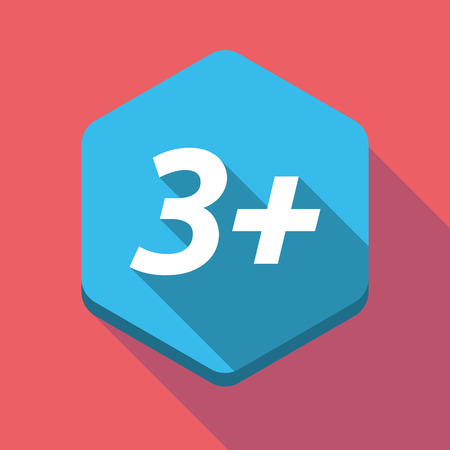1. Origins and Historical Roots of the I Ching
The I Ching, also known as the Book of Changes, stands as one of the world’s oldest books and spiritual guides. Its roots reach back over 3,000 years to ancient China, where it first emerged as a powerful tool for divination and decision-making. While its language and symbols may seem mysterious today, understanding its history helps reveal why the I Ching remains relevant even in modern times.
How Did the I Ching Begin?
The beginnings of the I Ching are wrapped in legend. According to Chinese tradition, its earliest symbols were created by Fu Xi, a legendary figure who lived around 2800 BCE. He is said to have observed nature—rivers, mountains, animals—and from these observations developed eight trigrams (called “ba gua”), which form the foundation of the I Ching system.
Early Uses: Divination and Guidance
Originally, the I Ching functioned mainly as a divination tool. Ancient Chinese leaders and common people alike would consult its hexagrams (six-line figures) to answer important questions about war, farming, marriage, or business. By tossing yarrow sticks or coins, they would generate a hexagram and then read an interpretation from the book.
Key Features of Early I Ching Use
| Feature | Description |
|---|---|
| Divination Method | Yarrow stalks or coins used to create hexagrams |
| Main Users | Kings, shamans, everyday people seeking guidance |
| Core Purpose | Decision-making and predicting outcomes |
| Symbol System | Eight trigrams combine into 64 hexagrams |
The I Ching’s Role in Chinese Philosophy and Culture
The influence of the I Ching soon went beyond fortune-telling. Philosophers such as Confucius and Laozi drew upon its ideas to explain the nature of change, balance, and harmony in life. Over centuries, it became a cornerstone of Chinese culture—shaping art, medicine, politics, and ethics.
Today, people across the globe use the I Ching not only for insight but also as a guide to personal growth and self-reflection. Its wisdom continues to inspire both Eastern and Western thinkers on how to navigate life’s uncertainties with mindfulness and clarity.
2. The Symbolism and Structure of the Hexagrams
Understanding Hexagrams and Trigrams
The I Ching, also known as the Book of Changes, uses a system of symbols called hexagrams to explore life’s transformations. Each hexagram is made up of six stacked lines, which can be either solid (representing yang) or broken (representing yin). These lines are arranged in pairs called trigrams—three lines each—that together create 64 unique hexagrams.
What Are Trigrams?
Trigrams are the building blocks of every hexagram. There are eight trigrams in total, each with its own meaning and symbolism. Here’s a simple table to help you understand:
| Trigram | Symbol | Element | Meaning |
|---|---|---|---|
| ☰ | Heaven | Sky | Creativity, strength |
| ☱ | Lake | Water | Joy, openness |
| ☲ | Fire | Fire | Clarity, passion |
| ☳ | Thunder | Wood | Movement, initiative |
| ☴ | Wind/Wood | Wood/Air | Gentleness, flexibility |
| ☵ | Water | Water | Danger, depth |
| ☶ | Mountain | Earth/Stone | Stillness, stability |
| ☷ | Earth | Earth/Soil | Nurturing, receptivity |
The Hexagram Structure: A Framework for Change
A hexagram combines two trigrams—one on top and one on bottom—creating a symbol that reflects a specific type of situation or change. For example, a hexagram might represent a time for action, patience, or reflection. This structure allows people to use the I Ching not just as an ancient oracle but as a practical guide for navigating the ups and downs of modern life.
The Ongoing Relevance of Symbolism in Everyday Life
The symbols within the I Ching have continued to resonate because they mirror real-life experiences. In American culture today, these symbols provide a way to talk about personal growth, decision-making, and adapting to new circumstances. The combination of yin and yang lines reminds us that change isn’t just about opposites—it’s about how those opposites interact and create something new.
A Simple Example: Reading a Hexagram Today
If you toss coins or use another method to generate a hexagram, you’re essentially creating a picture of your current situation using these ancient symbols. Many people in the U.S. find this approach helpful for reflecting on challenges at work, relationships, or even big life decisions—using the I Ching as a timeless tool for self-understanding.
The Takeaway: Timeless Symbols for Modern Guidance
The structure and symbolism of the I Ching’s hexagrams offer more than just historical curiosity—they provide an adaptable framework for understanding change that still speaks to our lives today.
![]()
3. The I Ching’s Journey to the West
The story of the I Ching’s arrival in the West is a fascinating tale of cultural exchange and curiosity. Although the I Ching had guided Chinese scholars, emperors, and everyday people for centuries, it wasn’t until the 19th and 20th centuries that this ancient oracle made its way into Western hands.
The First Encounters
Western interest in the I Ching began with explorers, missionaries, and traders who encountered Chinese culture. But true understanding required translation—and that’s where key figures stepped in.
Key Translators: Wilhelm and Legge
| Translator | Background | Contribution |
|---|---|---|
| James Legge | Scottish missionary, sinologist (1800s) | First major English translation; provided scholarly notes but focused on literal meaning |
| Richard Wilhelm | German sinologist, missionary (early 1900s) | Produced a poetic and influential German translation later translated into English; emphasized philosophical depth and spiritual insight |
The Initial Reception in the United States
The I Ching entered American consciousness mainly through translations like Wilhelm’s, which was embraced by intellectuals, artists, and those interested in Eastern spirituality. The book gained popularity during the counterculture movement of the 1960s and 1970s as Americans searched for alternative philosophies and new ways to understand themselves and their world. For many, the I Ching became more than an oracle—it was seen as a guide to life’s uncertainties.
Cultural Impact Highlights:
- Psychedelic Era: The I Ching appeared alongside other Eastern texts on college campuses and in countercultural circles.
- Carl Jung: The famous Swiss psychologist wrote an introduction for Wilhelm’s edition, connecting the I Ching to Western psychology.
- Mainstream Acceptance: Over time, the I Ching found a place in American bookstores—not just as a curiosity, but as a tool for self-reflection and growth.
The journey of the I Ching from ancient China to modern America highlights how timeless wisdom can cross borders and inspire new generations.
4. Embracing the I Ching in Contemporary American Culture
The I Ching’s Journey into Modern American Life
The I Ching, once a revered oracle in ancient China, has found new life and meaning in today’s American culture. Far from being just an exotic relic, it now serves as a tool for self-reflection, spiritual growth, and even psychological insight. But how did this ancient book of wisdom become part of the American landscape?
The I Ching and Psychology
In the 20th century, famous psychologist Carl Jung introduced the I Ching to Western audiences. He was fascinated by its use of symbolism and chance, believing it could help people explore their subconscious minds. Since then, many therapists and counselors in America have incorporated the I Ching into their practices as a creative way to spark conversation and inspire self-awareness.
How Psychologists Use the I Ching
| Application | Description |
|---|---|
| Dream Analysis | Using hexagrams to interpret dreams or personal symbols. |
| Decision Making | Offering a new perspective on life choices or dilemmas. |
| Mindfulness Practice | Encouraging reflection on present thoughts and feelings. |
The I Ching in Self-Help and Spiritual Practices
Many Americans turn to self-help books and workshops to improve their lives, manage stress, or find direction. The I Ching fits right in with these trends, offering guidance through its poetic advice and practical wisdom. Some people consult the I Ching as part of their morning routine, while others use it during times of uncertainty.
Popular Ways Americans Use the I Ching Today
| Practice | Purpose |
|---|---|
| Daily Readings | To gain insight and set intentions for the day. |
| Meditation Aid | To focus the mind using a chosen hexagram or passage. |
| Group Discussions | As a conversation starter in book clubs or workshops. |
| Personal Journaling | Reflecting on questions or answers inspired by readings. |
A Bridge Between East and West
The I Ching has become a bridge between Eastern philosophy and Western lifestyle. It appeals to Americans looking for meaningful traditions beyond their own backgrounds. Whether you’re seeking advice, exploring spirituality, or simply curious about ancient wisdom, the I Ching offers something unique for everyone in modern America.
5. The I Ching as a Modern Guide: Relevance Today
Finding Wisdom in Uncertainty
In today’s fast-paced American life, uncertainty is everywhere—from job changes and relationship shifts to social and political upheaval. The I Ching, or Book of Changes, offers a fresh perspective for those seeking clarity. Instead of giving direct answers, the I Ching encourages reflection and flexible thinking—qualities that are vital when life feels unpredictable.
Personal Growth in the 21st Century
Many Americans use the I Ching as a tool for self-discovery. By interpreting its symbols and messages, people find new ways to look at challenges, make decisions, and understand themselves better. It’s not about fortune-telling—it’s about guiding your thoughts so you can respond thoughtfully to whatever comes your way.
How Americans Use the I Ching Today
| Situation | How the I Ching Helps | Example Question |
|---|---|---|
| Career Uncertainty | Offers insight into possible paths and the best attitude to adopt | “What should I focus on during my job search?” |
| Relationship Decisions | Encourages honest self-reflection before taking action | “How can I improve communication with my partner?” |
| Personal Growth | Promotes adaptability and understanding of change as natural | “What can I learn from this setback?” |
| Coping with Stress | Provides calming rituals and mindful contemplation | “How can I find peace during stressful times?” |
I Ching’s Place in American Culture
The I Ching fits right in with America’s growing interest in mindfulness and holistic living. From yoga studios to college campuses, more people are turning to ancient wisdom for modern problems. Apps, online communities, and easy-to-read guides have made it accessible to everyone—no special training required.
Modern Ways to Consult the I Ching
- Mobile apps: Quick readings on your phone any time you need guidance.
- Group discussions: Friends gather to share interpretations and support each other.
- Journaling: Writing down your question, reading, and insights for future reflection.
- Counseling sessions: Therapists may use it as a conversation starter or self-awareness tool.
The Bottom Line: Timeless Advice for Changing Times
No matter how technology advances or society changes, Americans still face questions about purpose, direction, and growth. The I Ching remains a steady companion for those willing to pause, reflect, and embrace change as part of the journey.


